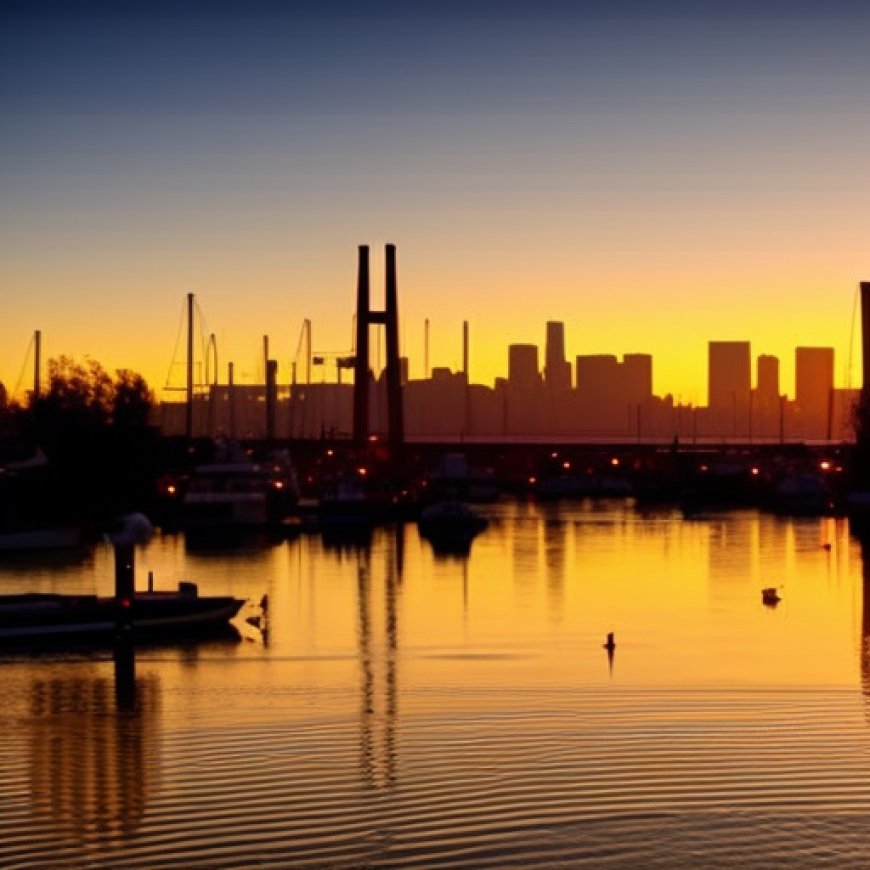These California cities have the worst air quality in the U.S.
These California cities have the worst air quality in the U.S. FOX 5 San Diego


Southern California Has the Worst Ozone Pollution in the U.S.
A recent national air quality “report card” reveals that Southern California has the worst ozone pollution in the United States. More than eight in 10 Californians live in an area with unhealthy air quality.
Los Angeles-Long Beach Ranked the “Smoggiest” Metropolitan Area
According to the American Lung Association’s 2024 State of the Air report, Los Angeles-Long Beach is ranked as the “smoggiest” metropolitan area in the nation for the 24th time, making it the worst place for ozone pollution. Bakersfield topped the lists of cities with the worst year-round and short-term particle pollution.
San Diego-Chula Vista-Carlsbad Ranks No. 8 for Ozone Pollution
Meanwhile, San Diego-Chula Vista-Carlsbad is ranked No. 8 on the list of most ozone-polluted cities in the U.S. It was also named one of the top cities with the most short-term particle pollution.
Grading Methodology
The report graded areas based on exposure to unhealthy levels of ozone air pollution, annual particle pollution, and short-term spikes of particle pollution collected over a three-year period.
California Cities on the Most Polluted Cities List
Twelve cities in California were ranked on at least one of the lists of the 25 most polluted cities in America. Los Angeles-Long Beach, Bakersfield, Fresno-Madera-Hanford, Sacramento-Roseville, San Jose-San Francisco-Oakland, and Visalia appeared in all three lists.
Impact on Health
Both ozone and particle pollution can cause premature death and other serious health conditions, including asthma, heart attacks, and impaired cognitive function.
Disproportionate Impact on Communities of Color
The report found that communities of color are disproportionately exposed to air pollution and are more likely to be living with health conditions that make them more vulnerable, such as asthma, diabetes, and heart disease. Approximately 63% of nearly 44 million residents who lived in areas with the worst air quality identified as people of color.
Sustainable Development Goals (SDGs)
- Ensure healthy lives and promote well-being for all at all ages
- Make cities and human settlements inclusive, safe, resilient, and sustainable
- Take urgent action to combat climate change and its impacts
- Promote just, peaceful, and inclusive societies
Conclusion
The air quality “report card” highlights the urgent need to address air pollution in Southern California. It is crucial to work towards achieving the Sustainable Development Goals (SDGs) to ensure healthy lives, sustainable cities, climate action, and social equity.
SDGs, Targets, and Indicators in the Article
1. Which SDGs are addressed or connected to the issues highlighted in the article?
- SDG 3: Good Health and Well-being
- SDG 11: Sustainable Cities and Communities
- SDG 13: Climate Action
- SDG 15: Life on Land
2. What specific targets under those SDGs can be identified based on the article’s content?
- SDG 3.9: By 2030, substantially reduce the number of deaths and illnesses from hazardous chemicals and air, water, and soil pollution and contamination.
- SDG 11.6: By 2030, reduce the adverse per capita environmental impact of cities, including by paying special attention to air quality and municipal and other waste management.
- SDG 13.1: Strengthen resilience and adaptive capacity to climate-related hazards and natural disasters in all countries.
- SDG 15.1: By 2020, ensure the conservation, restoration, and sustainable use of terrestrial and inland freshwater ecosystems and their services, in particular forests, wetlands, mountains, and drylands, in line with obligations under international agreements.
3. Are there any indicators mentioned or implied in the article that can be used to measure progress towards the identified targets?
Yes, the following indicators can be used to measure progress towards the identified targets:
- Number of deaths and illnesses caused by hazardous chemicals and air pollution (SDG 3.9)
- Air quality index and levels of air pollution in cities (SDG 11.6)
- Resilience and adaptive capacity to climate-related hazards and natural disasters (SDG 13.1)
- Conservation, restoration, and sustainable use of terrestrial ecosystems and forests (SDG 15.1)
Table: SDGs, Targets, and Indicators
| SDGs | Targets | Indicators |
|---|---|---|
| SDG 3: Good Health and Well-being | 3.9: By 2030, substantially reduce the number of deaths and illnesses from hazardous chemicals and air, water, and soil pollution and contamination. | Number of deaths and illnesses caused by hazardous chemicals and air pollution. |
| SDG 11: Sustainable Cities and Communities | 11.6: By 2030, reduce the adverse per capita environmental impact of cities, including by paying special attention to air quality and municipal and other waste management. | Air quality index and levels of air pollution in cities. |
| SDG 13: Climate Action | 13.1: Strengthen resilience and adaptive capacity to climate-related hazards and natural disasters in all countries. | Resilience and adaptive capacity to climate-related hazards and natural disasters. |
| SDG 15: Life on Land | 15.1: By 2020, ensure the conservation, restoration, and sustainable use of terrestrial and inland freshwater ecosystems and their services, in particular forests, wetlands, mountains, and drylands, in line with obligations under international agreements. | Conservation, restoration, and sustainable use of terrestrial ecosystems and forests. |
Copyright: Dive into this article, curated with care by SDG Investors Inc. Our advanced AI technology searches through vast amounts of data to spotlight how we are all moving forward with the Sustainable Development Goals. While we own the rights to this content, we invite you to share it to help spread knowledge and spark action on the SDGs.
Fuente: fox5sandiego.com

Join us, as fellow seekers of change, on a transformative journey at https://sdgtalks.ai/welcome, where you can become a member and actively contribute to shaping a brighter future.







